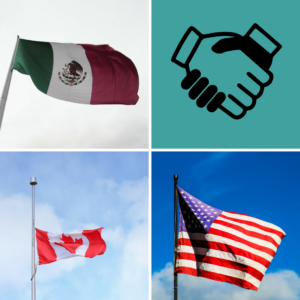NAFTA: What is it?

The North American Free Trade Agreement (NAFTA) is a trade agreement between the United States, Canada and Mexico designed to forge closer economic ties between the three countries. NAFTA entered into force on 1 January 1994 and includes chapters covering trade in services, investment, intellectual property rights and dispute settlement procedures. Tariffs were progressively eliminated and all duties and quantitative restrictions were removed by 2008 (excluding those on a limited number of agricultural products traded with Canada).
After notifying Congress of its intention to renegotiate NAFTA in May 2017, the Trump administration unveiled its goals and broad plan for negotiations in July 2017. Talks commenced in August 2017 and are on-going.
The trilateral trade accord links 444 million people producing $17 trillion worth of goods and services, with the countries involved responsible for roughly one-quarter of world GDP. More than a third of US export flow to Canada and Mexico and almost 80 per cent of Mexico’s total exports went to the US in 2013.